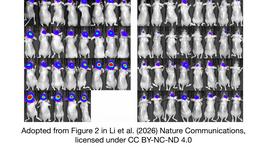Clinical Trial Update: CRISPR Therapy Designed to Cure Sickle Cell Disease
CMN Intelligence - The World’s Most Comprehensive Intelligence Platform for CRISPR-Genomic Medicine and Gene-Editing Clinical Development
Providing market intelligence, data infrastructure, analytics, and reporting services for the global gene-editing sector. Read more...
Graphite Bio reported early last year that the FDA had cleared an IND application in December 2020 for the company's lead CRISPR therapy candidate GPH101 for sickle cell disease (SCD).
GPH101 will be assessed in the Phase 1/2 CEDAR trial, a multi-center, open-label study to evaluate the safety, efficacy and pharmacodynamics of the new therapeutic candidate in adult and adolescents with severe SCD. The trial will enrol approximately 15 adult and adolescent participants at up to five clinical trial sites in the United States.
The first patient was enroled in the CEDAR trial in November 2021, and at that time dosing was expected to be initiated in the first half of 2022. Last week, Graphite Bio announced in a business and financial report that as a result of the recent COVID-19 Omicron variant surge on patients, site resources, and operations, the company now plans to dose the first SCD patient with GPH101 in the second half of 2022, with initial proof-of-concept data anticipated in 2023.
In the same press release, Graphite Bio announced that patient enrolment is now ongoing at multiple clinical sites, and that it expects to obtain initial proof-of-concept clinical data for GPH101 in SCD in 2023.
First experimental therapy to correct underlying SCD mutation
GPH101 is the first CRISPR-based therapy candidate designed to correct the HBB point mutation (see Fact Box), and it is anticipated to provide a permanent cure by targeting the root cause of disease.
Correction of the HBB gene leads to a decrease in sickle haemoglobin (HbS) production and restores normal adult haemoglobin (HbA) expression, thereby restoring completely normally-functioning red blood cells.
The candidate is engineered using patient-derived haematopoietic stem cells (HSCs) that are edited with Cas9-sgRNA gene-editing machinery and a DNA repair template, in a mechanism that essentially cuts the mutation out of the genome and replaces it with the correct sequence.
Cas9-sgRNA is delivered through ribonucleoprotein protein (RNP) complexes while corrected DNA template delivery is achieved through an adeno-associated virus 6 (AAV6) vector.
FACT BOX: Sickle Cell Disease (SCD) and Foetal Haemoglobin
SCD results from a single-point mutation in the haemoglobin subunit beta (HBB) gene and is associated with a range of symptoms and life-limiting complications. Vaso-occlusive crises (VOEs or VOCs) are the most commonly encountered complication in severe SCD, and these occur when small blood vessels get blocked because of sickled red blood cells which tend to be stiffer than healthy cells, and because the defective form of haemoglobin seen in SCD (haemoglobin S) renders the red blood cell membranes sticky.
Daily treatment for SCD patients is limited to symptom control, dietary intervention and pain management. While a bone marrow transplant from a healthy matched donor has traditionally been the only (albeit slight) hope of a cure for the haemoglobinopathies, gene-editing technology unleashes the possibility to cure a patient using their own cells. Central to many of the current approaches is foetal haemoglobin (HbF).
HbF is highly expressed and critical during foetal development, but then rapidly suppressed early in life. Extensive research on the molecular mechanisms of the haemoglobinopathies revealed that the B-cell lymphoma/leukaemia 11A gene, BCL11A, is a negative regulator of HbF expression, and that its disruption could restore HbF expression and reverse SCD in mice by compensating for the lack of functional adult haemoglobin. Since the discovery of this so-called haemoglobin switch, reactivation of HbF expression has emerged as a dominating therapeutic strategy for SCD.
Pre-clinical data supports curative potential of GPH101
In November 2021, the company presented pre-clinical data for GPH101 at the 49th Annual Sickle Cell Disease Association of America National Convention. This data supported the ability of Graphite Bio's gene-editing platform to precisely and efficiently correct the disease-causing mutation in HBB and restore adult haemoglobin expression with curative potential. The data also revealed minimal off-target effects using Graphite Bio's exclusively licensed high fidelity Cas9 and robust long-term engraftment.
Graphite Bio also presented a poster outlining the CEDAR trial, including the mechanism of action of GPH101, at the 63rd American Society of Hematology (ASH) Annual Meeting in December 2021.
We strive to keep you updated with clinical and pre-clinical news from the CRISPR Medicine field. For a complete overview of current gene editing clinical trials, check out CRISPR Medicine News' Clinical Trials Database.
To get more of the CRISPR Medicine News delivered to your inbox, sign up to the free weekly CMN Newsletter here.
Tags
ArticleClinical News UpdatesSickle Cell Disease, SCDGraphite Bio, Inc.Trials
CLINICAL TRIALS
Sponsors:
Base Therapeutics (Shanghai) Co., Ltd.
Sponsors:
Base Therapeutics (Shanghai) Co., Ltd.







